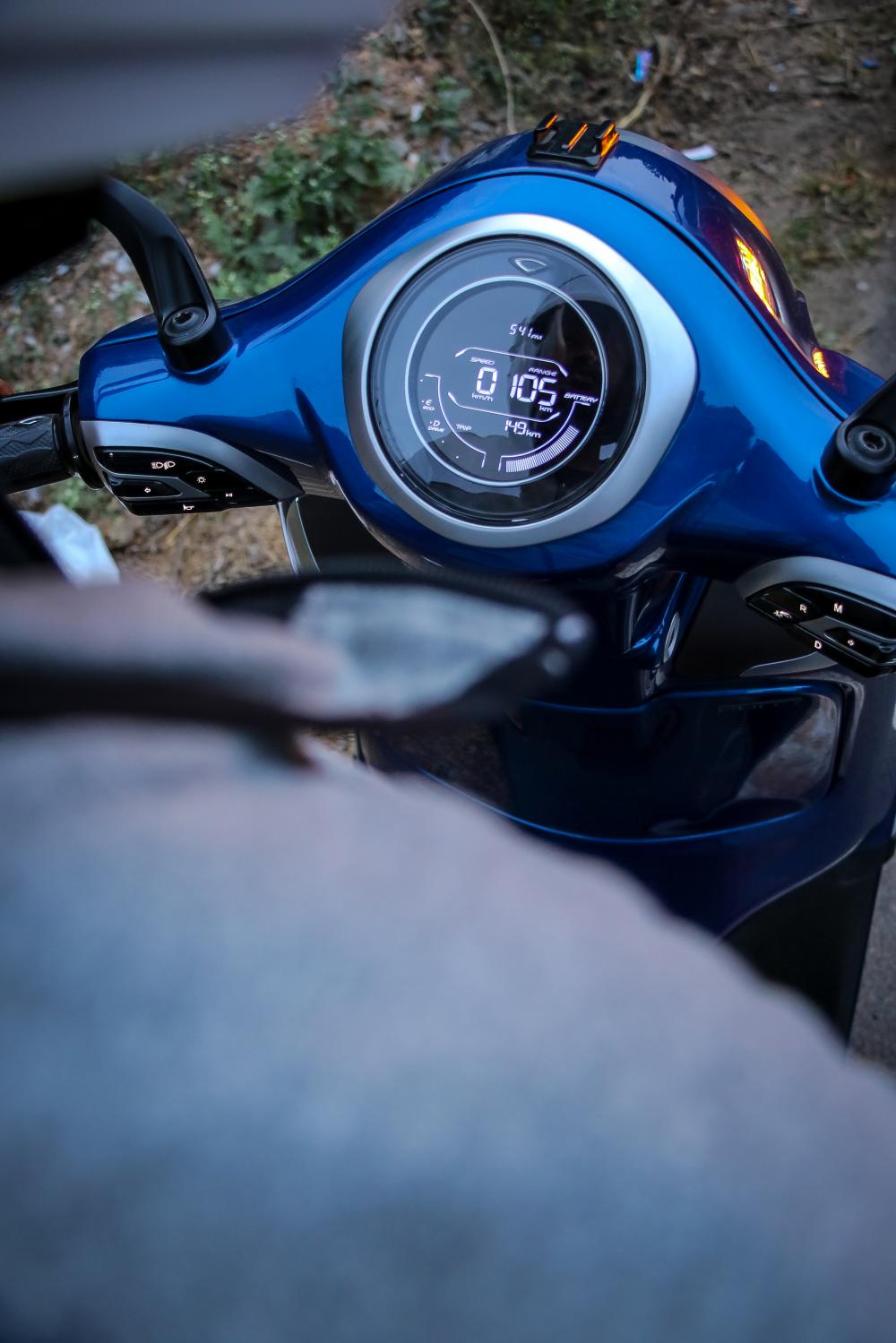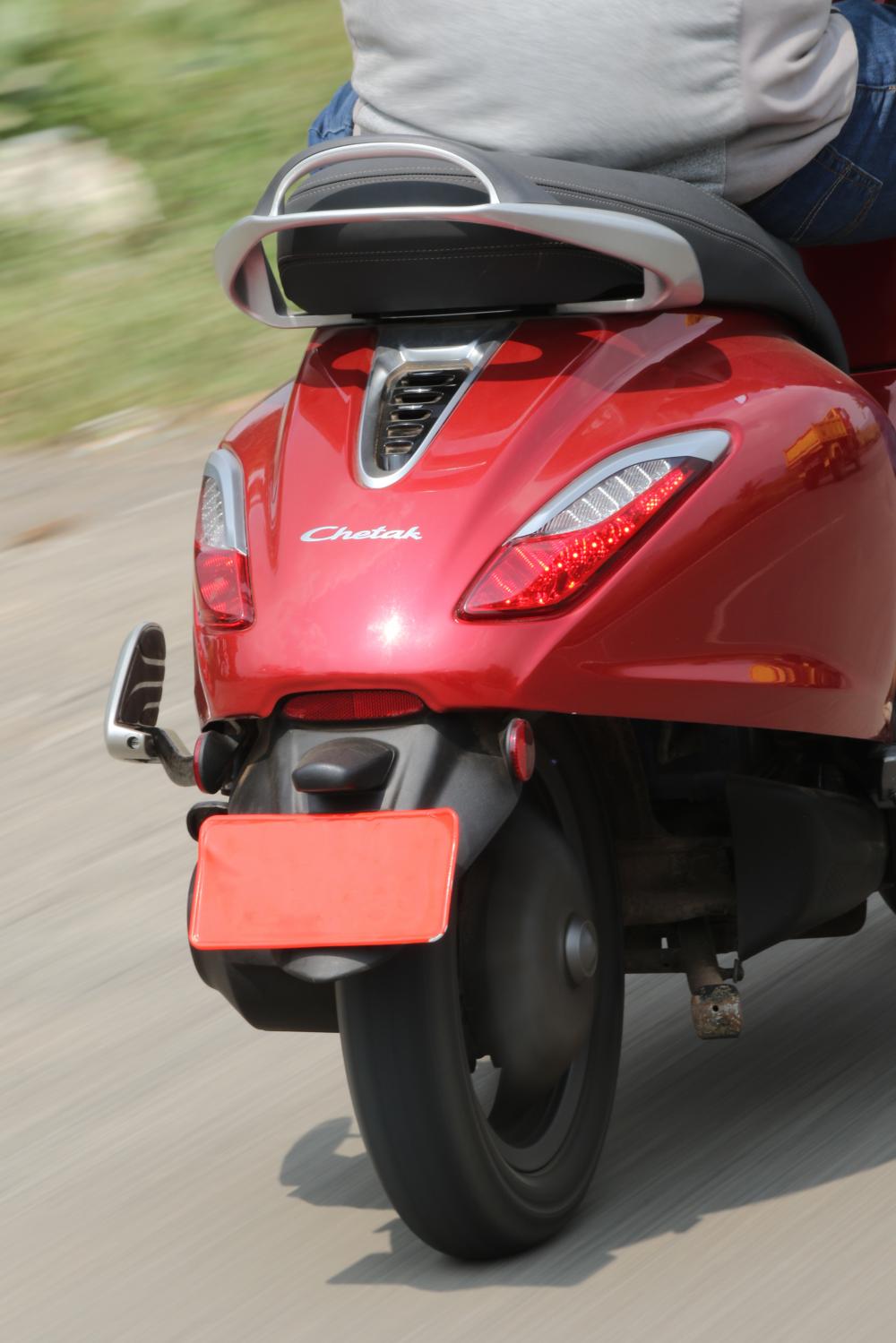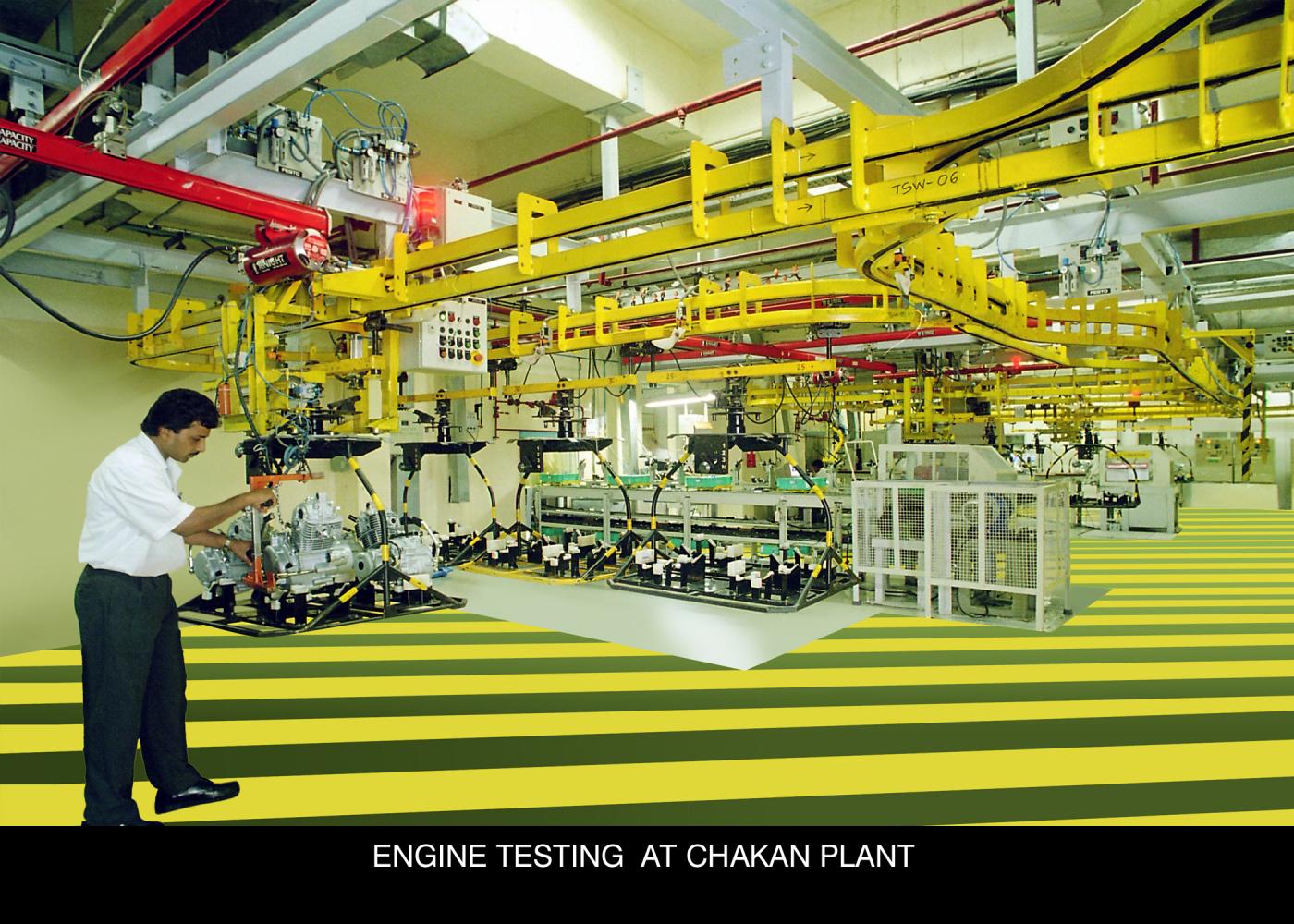
I have been testing a few electric scooters and motorcycles over the past year and admit that the Chetak e-scooter from Bajaj's Urbanite sub-brand is surprisingly well-made.
The Chetak's design may make you feel that you are riding an Italian-Japanese crossbreed, but after looking closer at the details and later feeling the ride, you'd probably forget about these issues.
Life recently travelled to Bajaj headquarters in Pune and visited one of its three factories in India. The Chakan plant produces most of the motorcycles destined for the Thai market. This includes all Bajaj models, KTM Duke and 790 Series, Husqvarnar Vitpillen as well as Svartpillen. But we will focus on the Chetak, which is Bajaj's first electric scooter.
The Chetak name has been taken from India's historic "War Horse" in 1576. The bike comes with a steel body that not only provides maximum safety but is also durable and should last for years. It's got seamless styling, and the Chetak will probably be the only steel body electric scooter sold in the Thai market.


The Chetak is designed for a totally different game compared to Chinese electric scooters that mainly focus on range and battery stations, where mobile batteries (located under the seat) can be replaced. There is also a Chetak app that allows customers to locate their scooter via GPS, receive notifications and updates.
This exchange battery station is the trend in the electric scooter world and is probably a good option for commercial use or delivery services. I have to say that it is not easy to design an electric scooter with good handling because of the weight distribution issue. The battery pack that is placed vertically under the saddle makes most scooters in the market suffer from disadvantages in handling and suspension. Only the Horwin EK1 and EK3 or Super Soco scooter I have tried are good in this department.
Performance
The Chetak may not be the fastest electric scooter in the market but it is comfortable and has a linear performance, with no frantic rush of power. Powered by a 48V lithium-ion 60Ah battery, at 1,400rpm the 4080 electric motor generates a peak torque of 16.2Nm and offers 3.8kW of continuous power (about 5bhp). The top speed is approximately 70kph while the maximum operating range per charge is 90km. Personally, I think a slightly higher top speed of 80kph would be more suitable for daily use in order to have overtaking capability. If the Chetak could reach 80kph, it would be perfect.
Suspension
The front suspension of the Chetak is a trailing link, and even though it doesn't have a telescopic setup the ride quality is pretty good, even when riding over potholes and speed bumps. When cornering in the city, the Chetak's tyres have more than enough grip when leaning over or braking hard. Please note that we don't know which tyre will be used for the Thai market -- the tyre size is 90/80/12 for the front and 90/100/12 for the rear.

Riding Modes
There are two riding modes: Eco and Sport. The rider can choose which mode to use, but in Eco mode when the throttle is fully open, the mode automatically switches to Sport. And if the battery is almost empty, the mode will automatically switch to Eco to get the most range.
Technology
The Chetak has a range of unique characteristics. Keyless start is standard, lighting is all-LED, and the turn indicators are directional like some high-end luxury cars. The LCD instrument console has a black-and-white theme and the fonts are laid out neatly. The Chetak app for Android and iOS makes it possible to connect to Bluetooth, which allows you to control music from the left handlebar. The LCD display also shows the time, range, charge level, odometer and trip meter. Through the Chetak app you can also check the location and status of your vehicle and set up geo-fencing for safety. This will be the new standard for electric scooters. But again, we have to wait and see if these goodies will be offered in Thailand.
On The Road
I rode the Chetak for a short time within the Bajaj factory in Pune so only focused on a few things I liked and disliked. Once it arrives in Thailand, we will do a full review again. For now, at least know that this is a different direction for making electric scooters.
The Chetak impressed me in terms of handling. It could be that the battery pack placed under rider's feet results in a low centre of gravity (apart from also offering good space for the U-Box under the seat). The steel body allows the bike to have reasonably good overall aerodynamics and riding position mated to a pretty good suspension design that works well with 12in alloy wheels with tubeless tires.
The Chetak comes with a reverse gear like most premium scooters, just press R and turn the throttle (maximum 7kph reverse speed for safety).

Verdict
The Chetak is a high-end newcomer within the electric scooter kingdom. Good materials, attention to detail, good handling and high safety are all priorities. It may not be the fastest, but it is certainly fast enough for use in the city.
It's also equipped with advanced technologies, but one major problem is that while other manufacturers are going towards replacement battery stations, the Chetak is still relying on built-in charging systems and fixed batteries. I appreciate this concept when everything is neatly packed and wrapped without being exposed to dust and filth.
As a result, we must now make a decision between simple electric scooters and premium models. The price has not been released yet, but more than 110,000 baht is a good guess.
A history of Bajaj
The Bajaj Group's flagship firm, Bajaj Auto Limited, was established in 1956 and has its registered office in Pune, India.
With 18 million motorcycles sold in over 79 countries, Bajaj is India's No.1 motorcycle exporter with two out of three bikes sold internationally. The company is also the world's largest manufacturer of three-wheelers. Bajaj Auto is the world's most valuable two-wheeler company, with a market worth of INR 1 trillion (440 billion baht). The company has been delivering products continuously for the past 75 years, and presently holds 47.9% of KTM AG of Austria through its 100% subsidiary Bajaj Auto International Holdings BV Netherlands.
KTM AG achieved the highest ever sales of 261,529 units in the last fiscal (CY18) out of which 100,000 motorcycles were manufactured at the Chakan plant. The company has an in-house, government-recognised R&D centre and has introduced outstanding models such as the Dominar, Pulsar, Discover, Boxer, Platina, RE, Maxima three-wheelers, Qute quadricycles and patented technologies like DTS-i and ExhausTEC.

The Bajaj Auto company invited Life to come and visit recently. It was to one of three factories producing Bajaj, Kawasaki, KTM, Husqvarna and Triumph automobiles and exporting 400 motorcycles every day.
Bajaj has maintained a broad portfolio of fundamental activities since 1945. Finance, insurance and electronics are examples. They want to become the mainstream technology leader by manufacturing and distributing affordable motorcycles.
Bajaj's Pune facility can produce 845 motorcycles per day. Bajaj Auto combines solar energy and computerised research design to produce practically everything, saving 2,220 tonnes of carbon emissions annually. Bajaj Auto can produce up to 100 engines. The company exports motorcycle body parts and paint to 4,000 dealers around the world. In South America and Africa, it's the best-selling product. They're now interested in America, Europe and Asia, especially Thailand.
We visited Bajaj factories that manufacture Bajaj, KTM, and Husqvarna motorcycles. In these plants, the balance between workforce and automation will become increasingly vital. Bajaj Auto was named India's best employer in 2020 and 2021.
Bajaj's objective is to maintain low-cost raw resources with strong potential for producing quality goods that impress customers. In addition, Bajaj products must be unique — or "affordable with exceptionally good quality".

The battery story
Range and reliability
The Chetak isn't made for long distances. It is an urban electric scooter with a range of 90km (under IDC per AIS 040) in Eco Mode on a full charge with a new battery. The real-life range attained by a user depends on factors such as battery age, road and traffic conditions, elevation variations, tyre condition and pressure, riding style, vehicle load, and use of electrical equipment such as lamps, horns and mobile phone charging.
High-quality battery cells and safety
The Chetak lithium-ion battery is designed to last 112,650km or 7 years if kept charged above 15% capacity and used regularly. It uses high-quality lithium-ion cells from reputable producers worldwide. Before battery assembly, it goes through cell uniformity verification and automated sorting and batching. There are multiple internal safety precautions, such as a Current Interruption Device, which isolates the cell in case of malfunction. The Chetak stores its energy in its battery and is designed to run securely and reliably in all seasons and terrains, provided users take basic care.
Charging battery
Charging must be done in dry conditions from a protected, earthed 3-pin plug with a 10A MCB. An electrician should install the charging port for safety. Chetak recommends using IEC 60309 industrial sockets (15A, single-phase). The scooter is sold with its own charging cable with in-built safety devices to isolate the vehicle and charger in case there is any earthing leakage or isolation. The charging cable is a primary safety device supporting IEC 60309 with a 3-pin 5A snap-on adaptor.
On-board charger
On-board chargers, like those in cars, ensure that the charger and charging conditions are not misused. Automatic earth detection, broken neutral detection, and voltage and current surge isolation are implemented internally, without external equipment. The Chetak limits quick charging to ensure the battery's safety. That means switching batteries at mobile charging stations in Thailand isn't ideal and if you live in a high-rise apartment, this is a huge problem.
Battery Heat management
The Chetak is a ground-up design for use in hot and dusty environments. Apart from an IP67 water resistance rating, the Chetak implements super-efficient heat transfer solutions with the use of a powerful fan to cool the battery at any point in time. You can hear the operation of this powerful fan during charging and occasionally whilst riding the scooter. You can experience the heat removal from the battery and other electronic systems by standing behind the Chetak when the fan is running.







